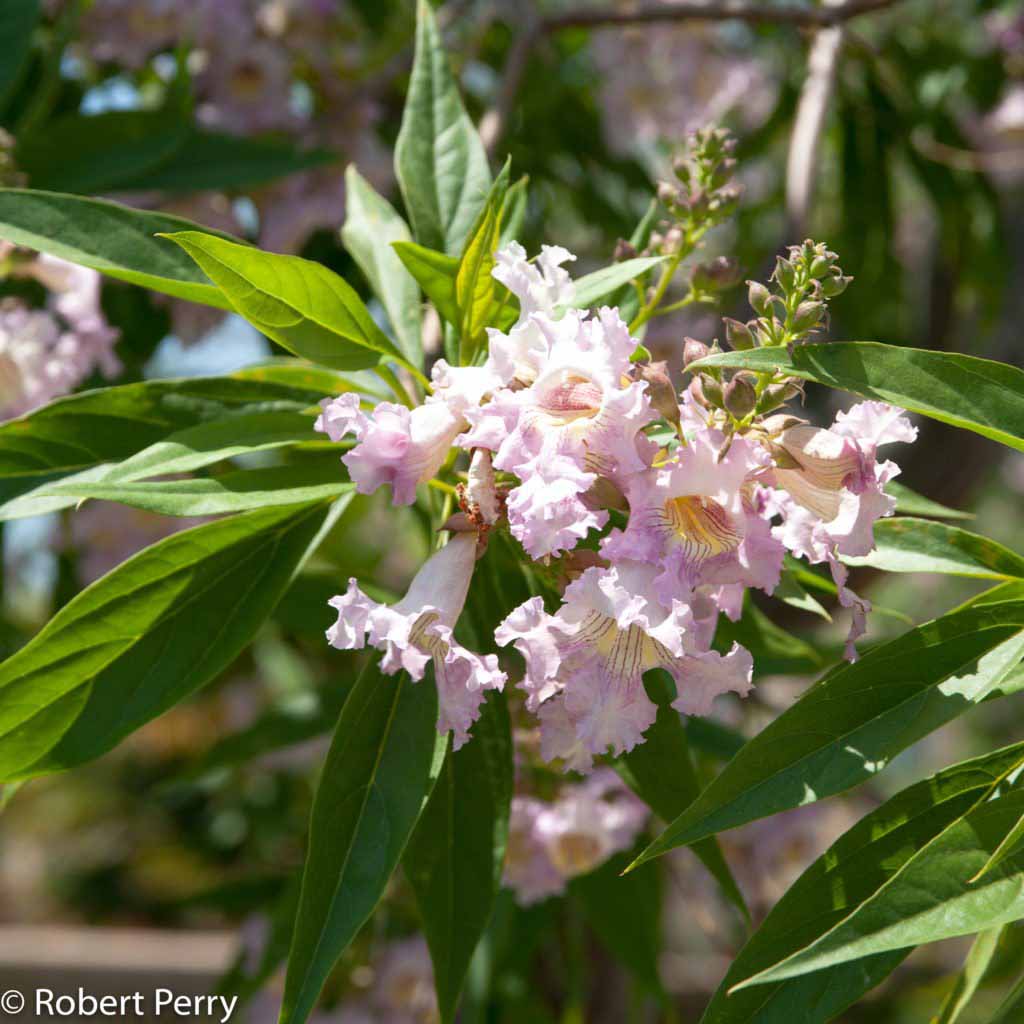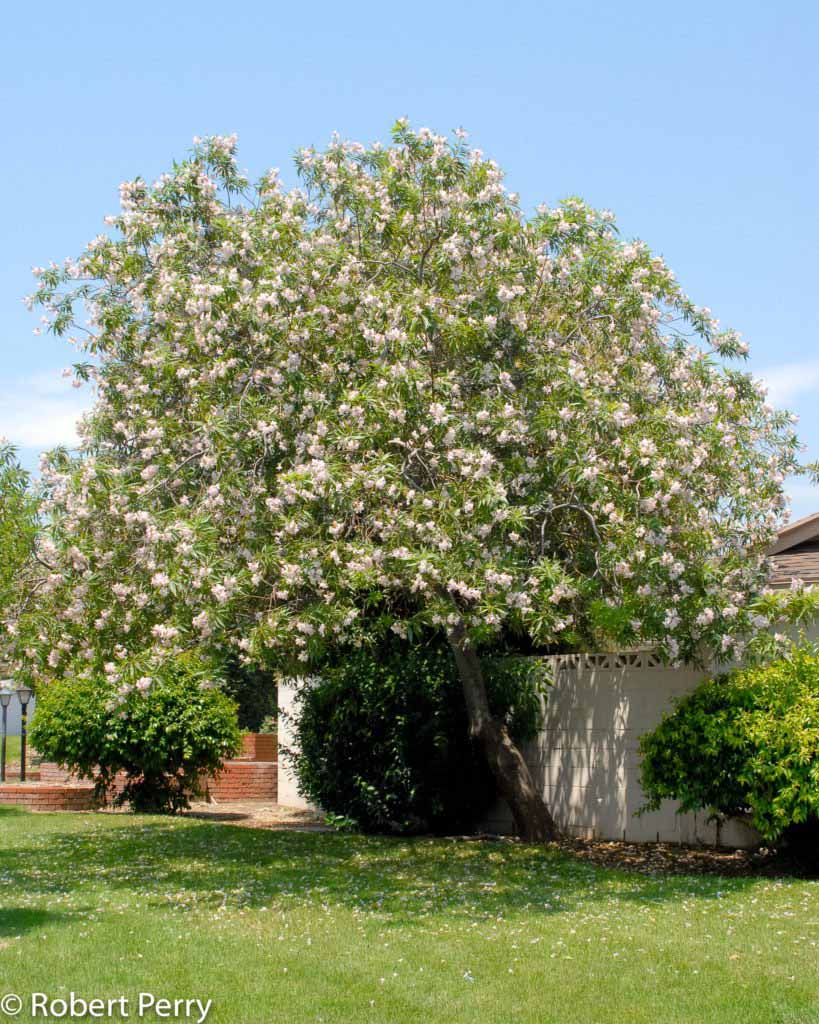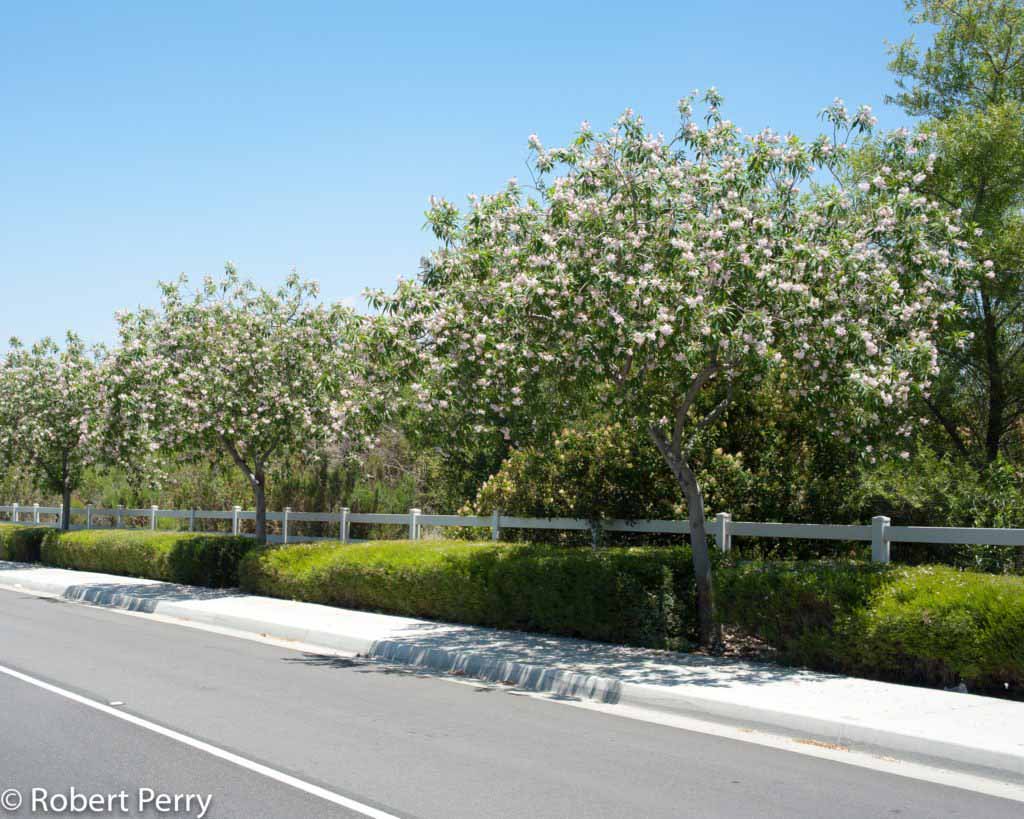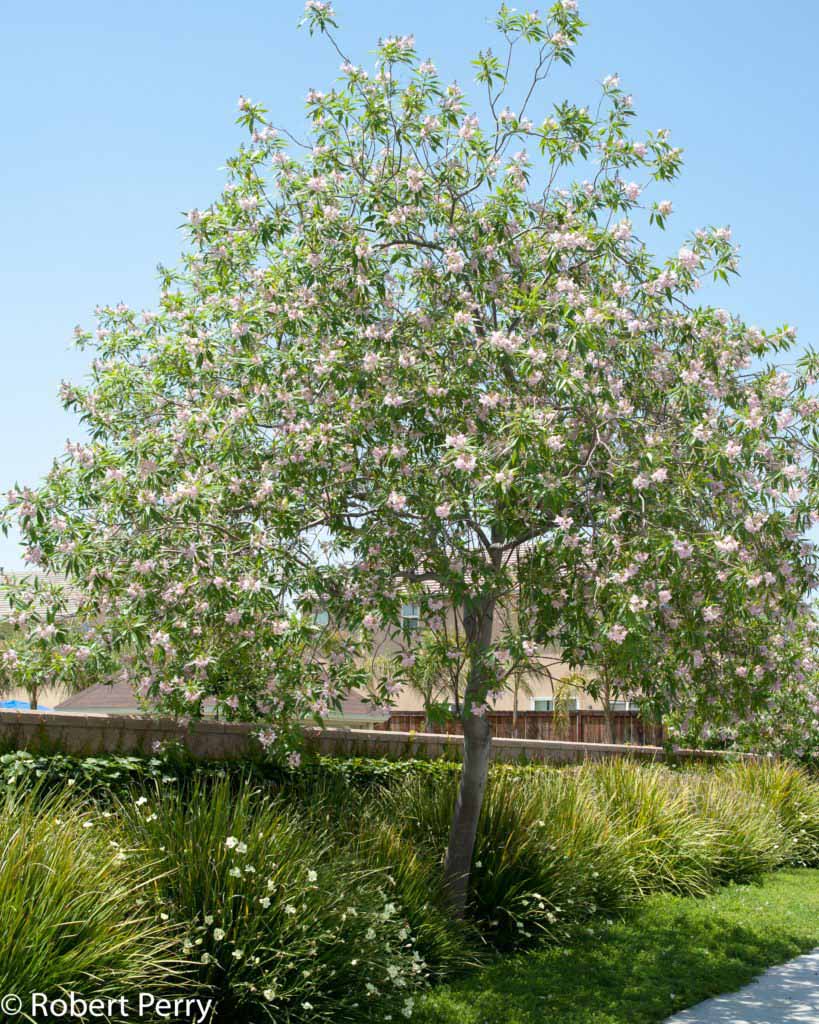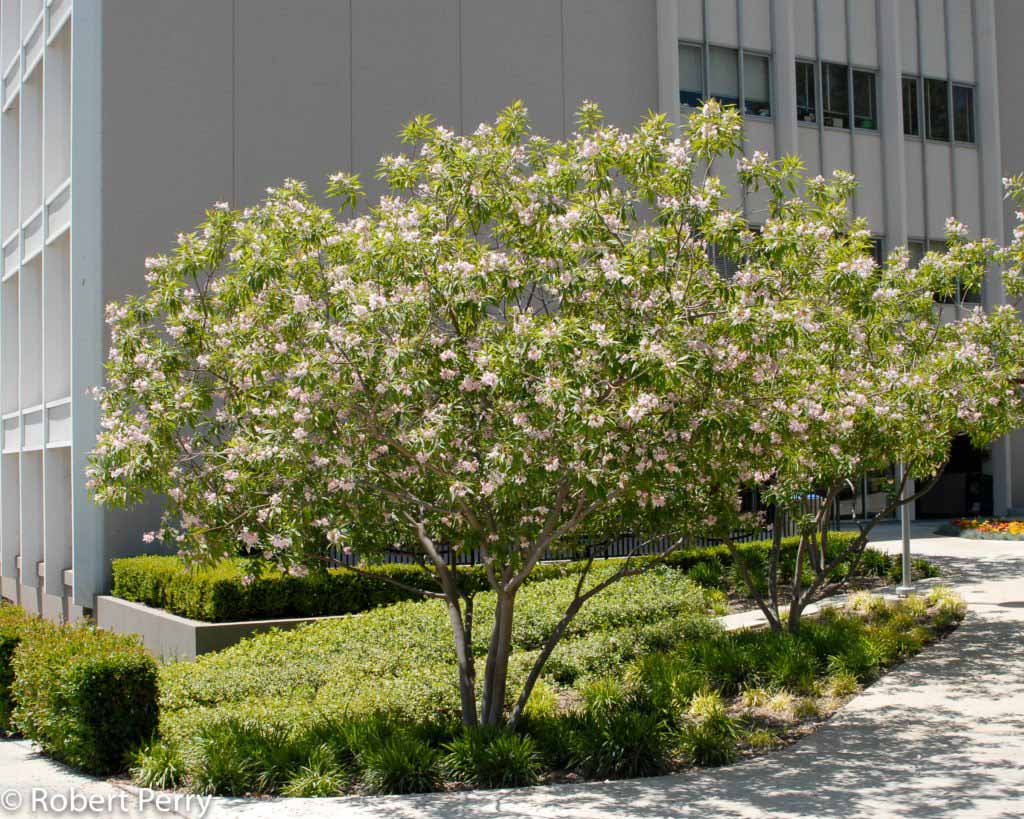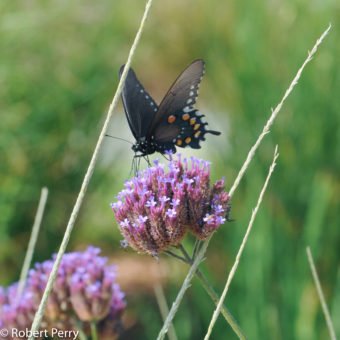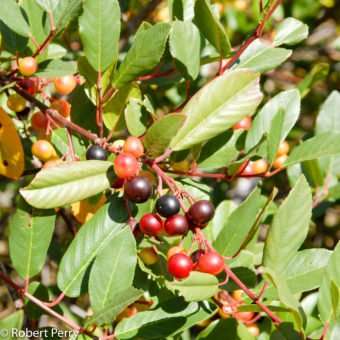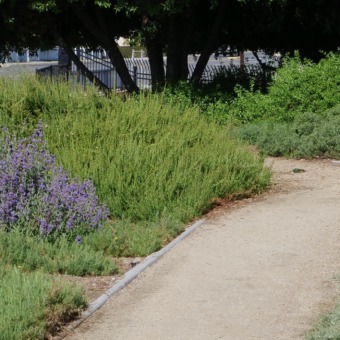Pink chitalpa is a medium size deciduous tree developing a dome shaped canopy and growing rapidly to 20-30 ft. tall and as wide. Medium green leaves grow 4-5 in. long, to 1 in. wide and grow on twisting branches. Trumpet-shaped flowers are pink to white, with purple markings and occur in showy clusters from late spring into early summer.
Pink chitalpa is hybrid between Catalpa bignonioides, Common catalpa, and Chilopsis linearis, Desert willow. It combines the larger flower size of the former species, with the linear leaves and desert adaptations of the latter. As a result, this hybrid provides a highly attractive combination of flowers, foliage and adaptations to many growing conditions. In Inland Empire gardens and landscapes it is grown as a low branched specimen for use in courtyards and as a single trunk tree that is planted as a street and yard tree. It tolerates frost, sun and heat, and low amounts of water during the summer.
